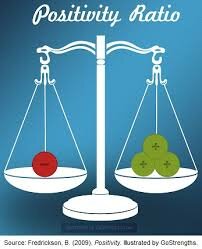The Negativity Bias: The most interesting Cognitive Bias?
Opinion
I don’t know why of all the Cognitive Biases on offer I like this one the best.
The Negativity Bias
Did you know we have 6 primary emotions: Fear, disgust, anger, sadness, surprise, and joy. Perhaps the most striking thing about this list of our primary emotions is that only one is a positive emotion whilst four are negative (and one ‘surprise’ is half way)? The reason why we have more negative than positive primary emotions is, according to evolutionary psychology, in tougher times we needed to be more aware of threats and dangers in our environment to survive – hence we were hyper-vigilant to the negatives.
We were born with a disposition to focus on the negative for survival.
Our primary emotions are processed deep within the brain (in an area called the amygdala). Once bad news hits the amygdala it tends to process and store it in long-term memory, much more efficiently than positive information is.
As humans we operate largely in System 1 type thinking. This is thinking that’s largely assumptive and implicit. Therefore, for the reasons above, we have what’s called a ‘negativity bias’ inbuilt into our central processing unit (our brain). Our negativity bias ensures that we both pay more attention to, and give more weight to, information we receive that’s negative in nature. Consider the following:
- 74% of all words used to describe personality are negative as well, and when remembering people we tend to remember their negative / unattractive features rather than their positive ones! (Bosman, 2012)
- Two people come to you and demand your attention straight away, one has negative news, one has positive news – who do you attend to first? Yep, according to research the negative one.
- Psychologist John Cacioppo (1997) showed participants in a study three types of pictures, positive, negative, and neutral, whist strapped into a machine measuring the electrical activity of the brain. The brain activity was significantly greater when looking at the negative imagery, meaning the brain was processing significantly more information.
The Impact
All of this means that when looking at advertising or information from advertising, we will pay more attention to the negative ads. So if there is something negative you want to say about your competition go ahead – people will listen. Politicians know this all to well. It’s been well established that negative advertising is more effective than positive advertising. This would be due in part to the negativity bias. Advertising that aggressively undermines its competitors can stand out. If you’re a challenger brand perhaps you need to pick a fight. If you’re a declining market leader, perhaps its time to point out the weaknesses of your number two.
However, why are marketers so reluctant to be more negative if it works? In short, it’s probably got to do with a simple little thing called ‘the brand’. When push comes to shove for politicians, i.e. the campaign period, all long term thinking goes out he window, and a win at all cost mentality dominates. Politicians are I the luxurious position to be negative and get the short terms benefit – voted into office, without having to worry to much about the long term impact on their brand.
However, marketers have a brand to build and protect. They are not just interesting in getting the attention (and sale) they are interested in building their brand over time. Many studies have shown brands that are liked more, are purchased more. It’s hard to like someone, or something that is extremely, and consistently negative.
The Recommendation
A brand is a cluster of cultural ideas, it is the summation of everything it does. Many brands are so positive and so glossy that they become artificial and glib. Brands that are not afraid to show their dark side once in a while will have two significant benefits. Firstly, the brand will appear to be deeper, and more ‘real’, with more authenticity, as a brand has shown it’s dark side (and as Jung said there is strength in embracing our dark side). However, more importantly, a brand that has a negative campaign once in a while is going to cut through and get noticed.
We are hard wired to pay attention to negative messages so don’t be afraid of giving it a go every once in a while. People will notice the message, and process the information. Further, it won’t just appeal to consumers. Negative messaging will stand out in social media and PR as well – increasing its likelihood to get talked about. In addition You may notice the advertising agency getting extremely excited about receiving a brief asking to be negative. There is a lot of creative juice in the negative, or dark side of a brand (or your competitors).
There are easy gains to be made being negative once in a while. If kept in balance and used for a small percentage of the overall communications then being negative every once in a while will only be positive for your business.
References
Cacioppo, J. T., Gardner, W. L., & Berntson, G. G. (1997). Beyond bipolar conceptualizations and measures: The case of attitudes and evaluative space. Personality and Social Psychology Review, 1, 3-25.
Bosman, M. (2012). “You Might Not Like it, But Bad is Stronger than Good”.


